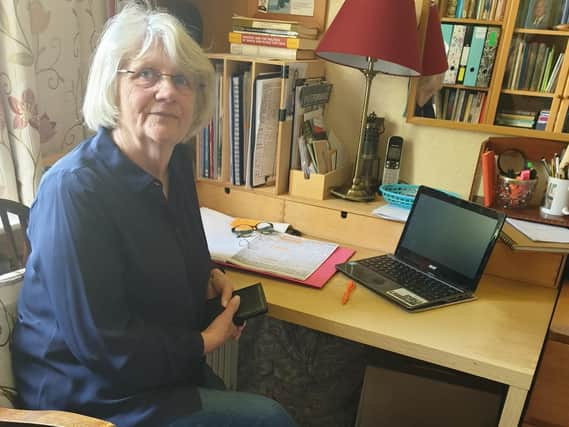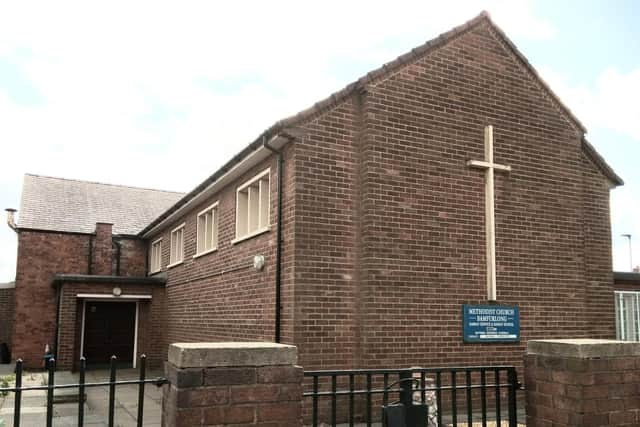Local historian delves into history of Wigan mining communities


The stories take Yvonne back to the area where she was brought up and have been occupying her during the coronavirus lockdown which has prevented her going to the archives to look at research material.
The articles have shed light on a number of fascinating stories from the past, showing the ordinary lives of the men who worked down the pits in the borough and their families in the final years of the 19th century and the very early 1900s.
Advertisement
Hide AdAdvertisement
Hide AdSo far she has written about Bamfurlong Miners’ Institute, the Garswood Hall Colliery and Ashton Golf Club, the building of Bryn Gates and its Co-op, the Primitive Methodist churches in the area and one on Bamfurlong Village.


She intends to make it a half-dozen for the series with the extraordinary and shocking tale of a mining disaster in the area in 1893.
Yvonne said: “I can’t go into the archive to do my research because of the lockdown so I’ve been trawling through my notes for some short articles and was quite surprised by what I had.
“They are local histories of the institutions of the villages. It doesn’t really touch on politics but one does mention the American airstrip at Ashton, which I didn’t know about until I did the research,
Advertisement
Hide AdAdvertisement
Hide Ad“The one on the Methodist churches is about the iron churches, the Tin Tabernacles as they were known, at Stubshaw Cross, Bamfurlong and Platt Bridge.
“The institute was built by the miners themselves. They were going to go along with others but then one of the other pits had a disaster and they couldn’t afford to contribute anything.
“It provided recreation, classes, lectures and a smoking room and billiard room.
“There was also a big Rec right next to the Three Sisters and that was the beginning of Ashton Golf Club.
Advertisement
Hide AdAdvertisement
Hide Ad“It’s marvellous that these mining villages have so much history.”
Yvonne says she has been delighted with the positive response to her posts on social media.
She is an experienced local historian and for around a dozen years has been contributing articles to the Past Forward magazine dedicated to borough history.
She has written on topics including Peterloo and was working on the significance of the Ashton colliery communities to the Miners’ Union and the early Labour Party in the 1890s and 1900s when the Covid-19 pandemic forced the archive to be shut.
Advertisement
Hide AdAdvertisement
Hide AdHer final piece in this series details the horrifying disaster at a local pit in 1893.
Yvonne said: “There was a 13-year-old boy left in charge of the working engine. It ran on compressed air and they used to pour paraffin on it to warm it up and get it started.
“This lad was a lasher-on. There was a rope system that the trucks were fastened to and his job was to attach them when they were full of coal. He would have had no technical training, nothing.
“One day the boy who was usually in charge of the engine was off sick and he said he would do his job. He was hardly supervised and as he was lighting the paraffin it set alight and the engine was also sat on wooden floorboards. In total 16 men and boys were suffocated. There was a big inquiry afterwards.”
Advertisement
Hide AdAdvertisement
Hide AdTo read Yvonne’s local history posts, search for Wigan & Leigh Archives & Local Studies on Facebook.
As a preview, here is her piece about the Primitive and Independent Methodist churches of the area:
In 1819 the Independent Methodist Church opened on Bolton Road, Stubshaw Cross and was still baptizing babies in 1836. In 1857, North Street Primitive Methodist Church, Stubshaw Cross opened.
Its congregation included methodists from Bryn Gates and Bamfurlong. By the 1880s Bamfurlong and Bryn Gates methodists had formed their own church in William Liptrot’s loft, opposite the current church.
Advertisement
Hide AdAdvertisement
Hide AdIn 1885 it had joined the Lowton Methodist Circuit, and shared its first three ministers with Stubshaw Cross.
Bamfurlong’s Iron Church was built in 1894 by a Mr Lees of Manchester, an ‘Iron Chapel Erector,’ and cost £302. A Mr Hollinsworth, a farmer near Bryn Hall, initially loaned £100 as did a Mrs Sharp of Edge Green, Golborne. The rest was raised by the congregation.
In 1904 Bamfurlong rebuilt its Sunday School. And in 1907 the Stubshaw Cross’ church advertised for contractors to build theirs. Mr Tunstall, 347 Bolton Road, Stubshaw Cross offered prospective builders copies of plans and specifications for £2 2s.
Bamfurlong’s Sunday School Hall became the hub of the community and a necessary source of regular income.
Advertisement
Hide AdAdvertisement
Hide AdBryn Gates Co-operative Society, who had close ties with the church, were charged 2s 4d for each meeting. The Co-op frequently borrowed the church’s crockery for their functions, perhaps paying a hire fee. Abram Urban District Council National Savings Group hired the Hall for a Concert in 1908. All groups using the hall were charged. This included from 1904 their increasingly successful football team, Stubshaw Cross’ Cricket team, the church’s Band of Hope and numerous other groups.
The church itself was a source of income, until 1912 pew rents were charged, in 1905 members paid 9d per sitting.
Over the years the Hall was the venue for many fund-raising and social activities; including bazaars, a cake and apron sale, an Old Fashioned Fair, an American Social, and operettas including Princess Ju Ju.
Bamfurlong Miners’ Association held their union and political meetings there. Between 1906 -1910 the church’s Minister Rev. T Mann was deeply involved with Labour politics. The hall was an important venue during Stephen Walsh (Ince) and James Seddon’s (Newton) Parliamentary campaigns. As Bamfurlong was in the Parliamentary Division of Ince, Stephen Walsh was their MP. and as Bryn Gates was in the Newton Division, James Seddon was theirs.
Advertisement
Hide AdAdvertisement
Hide AdThe realities of war had an impact. The Church lost members during WW1. And in 1944, the US Army Battalions stationed at Garswood Park (training ground and airstrip), and Haydock Park racecourse (storage facility) preparing for the D-Day Landings, were offered a vestry for correspondence and socialising.
After the war the constant battle to maintain the iron building made it more expedient to build a new building. The current building opened in 1957 and the School Hall’s frontage was replaced in 1988.